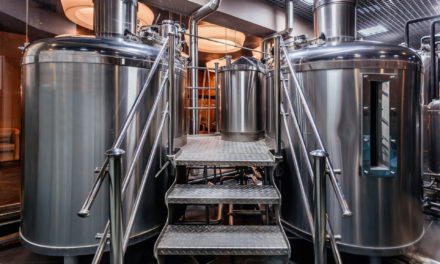Brewers Association Director Paul Gatza sparked quite a few conversations when, speaking at the 2014 Craft Brewers Conference in Denver, he delivered a passionate speech about the importance of safeguarding quality as a defining characteristic of the craft beer industry.
“Many people in this room have spent a lot of time and dedicated a good portion of their lives to building this community that we have today,” he said by way of closing remarks. “Seriously, don’t f— it up!”
Craft beer has only continued its red-hot ascent in the years since. The total number of operating breweries and brewpubs recently cracked the 5,000 mark for the first time in American history, with many more in planning.
That kind of growth — consistent, double-digit annual gains in the craft segment compared to a relatively stagnant overall beer market — is bound to draw investor attention, which is one reason we’ve seen so much contraction, acquisitions, consolidation and rapid expansion throughout all levels of the industry, as new players get involved and some in the old guard look to cash out.
The infusion of that much capital can go a long way toward improving the operational efficiency, scale and reach of many craft breweries, but it also creates pressure to increase output and trim the bottom line to stay ahead of loan repayments, equity dividends and other financial demands. There’s also consumer confusion created by the increasingly fuzzy line between what’s craft beer and what is merely “crafty” beer, as the Brewers Association (a trade group for small and independent brewers) likes to say.
On the other end of the spectrum, many startup breweries are trending smaller and smaller as owners look to take advantage of the still-plentiful opportunities represented by hyper-local markets. Many of these new owners are new to the craft industry — and not always well versed in its standards, practices and spirit of camaraderie.
It all has the potential to impact quality. In many cases, it already has.
It can be very temping to skimp on ingredients, cut down fermentation times, understaff your brewhouse or otherwise find ways to produce more beer more quickly and for less money. Sometimes, you literally can’t afford to dump a batch of beer that isn’t up to spec, but it’s a call that has to be made.
“It’s hard to tell accounts that are waiting on their next keg, ‘This batch was dumped and we’re brewing it again. We’ll have it, but it’s going to be a couple of weeks,’” says Neil Fisher, co-owner and head brewer of WeldWerks Brewing Co., a small brewery based in Greeley, Colo., that was named “best new brewery in the country” in a 2016 USA Today reader poll.
“That’s a tough position to be in, especially for a very small brewery, when you don’t have that capital sitting in the wings or a huge buffer of be able to dump thousands of dollars worth of beer down the drain. But for us, our reputation is too valuable,” Fisher says. “We decided from the beginning we’d make quality and service paramount to our business, beyond even the dollars and cents of the day-to-day.”
Making a short-term decision to save a few cents on the dollar is a sure way to shortchange your business in the long run. In a crowded beer market, where “craft” isn’t always what it seems, quality is an important point of differentiation.











